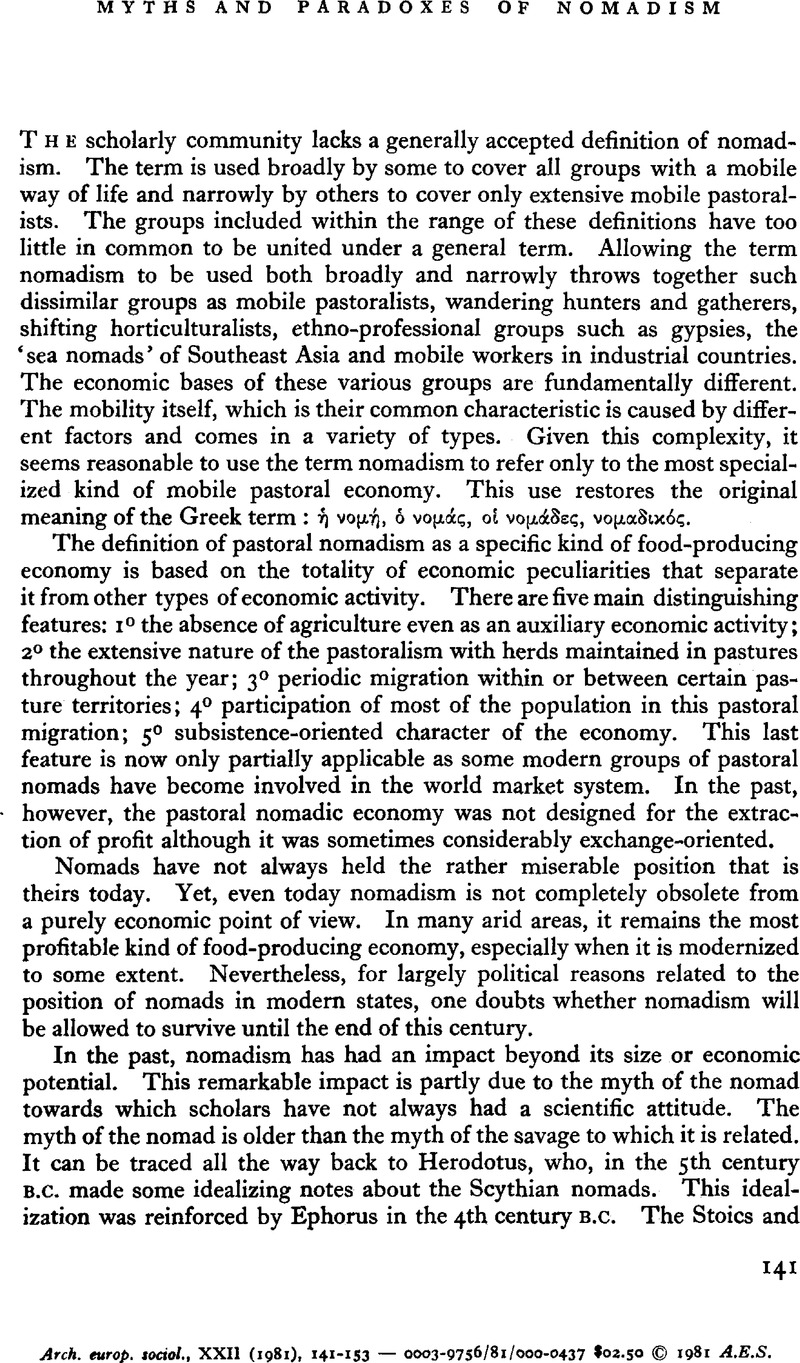Crossref Citations
This article has been cited by the following publications. This list is generated based on data provided by Crossref.
Sinor, Denis
1990.
The Cambridge History of Early Inner Asia.
Scholz, F.
2001.
International Encyclopedia of the Social & Behavioral Sciences.
p.
10650.
Kaufmann, Jeffrey C.
2009.
The Sediment of Nomadism.
History in Africa,
Vol. 36,
Issue. ,
p.
235.
Kreutzmann, Hermann
2013.
The tragedy of responsibility in high Asia: modernizing traditional pastoral practices and preserving modernist worldviews.
Pastoralism: Research, Policy and Practice,
Vol. 3,
Issue. 1,
Eke, Surulola
2020.
‘Nomad savage’ and herder–farmer conflicts in Nigeria: the (un)making of an ancient myth.
Third World Quarterly,
Vol. 41,
Issue. 5,
p.
745.
Dolker, Padma
2022.
Nomadic pastoralism of Changthang, Ladakh, at a crossroads: changing socioeconomic characteristics, livelihood and livestock composition.
SN Social Sciences,
Vol. 2,
Issue. 1,
KOÇERDİN ÖZTÜRK, Emsal
2022.
Environmental and Cultural Dynamics in the Formation of Nomadic Culture.
ODÜ Sosyal Bilimler Araştırmaları Dergisi (ODÜSOBİAD),



